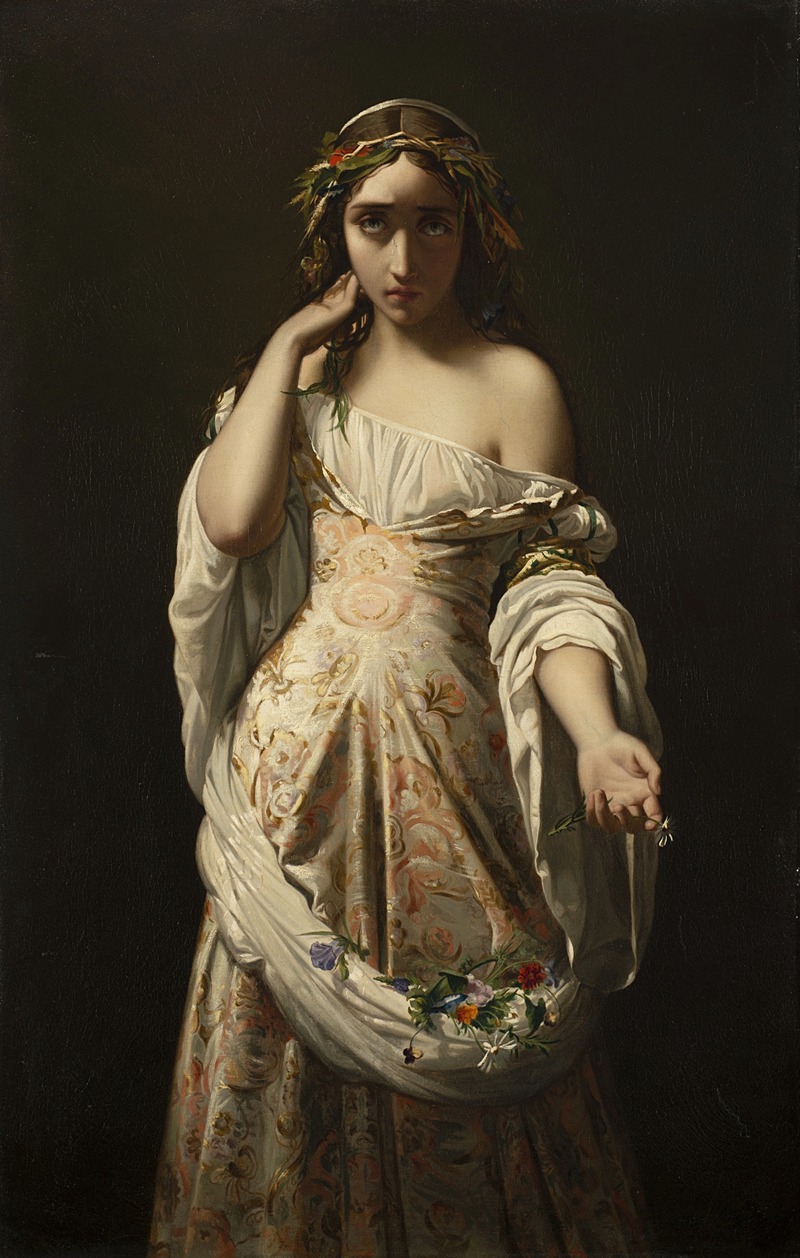
Ophelia
A hand-painted replica of Henri Lehmann’s masterpiece Ophelia, meticulously crafted by professional artists to capture the true essence of the original. Each piece is created with museum-quality canvas and rare mineral pigments, carefully painted by experienced artists with delicate brushstrokes and rich, layered colors to perfectly recreate the texture of the original artwork. Unlike machine-printed reproductions, this hand-painted version brings the painting to life, infused with the artist’s emotions and skill in every stroke. Whether for personal collection or home decoration, it instantly elevates the artistic atmosphere of any space.
Henri Lehmann's "Ophelia" is a notable painting that captures the tragic character from William Shakespeare's play "Hamlet." Henri Lehmann, a French painter of German origin, created this artwork in the mid-19th century, a period marked by a fascination with Shakespearean themes in the visual arts. Lehmann was born in 1814 in Kiel, Germany, and later moved to Paris, where he became a prominent figure in the French art scene. He was a student of Jean-Auguste-Dominique Ingres, a leading Neoclassical painter, and his influence is evident in Lehmann's meticulous attention to detail and classical composition.
The painting "Ophelia" depicts the character from "Hamlet" in a moment of poignant vulnerability. Ophelia is a young noblewoman of Denmark, and her story is one of love, madness, and tragedy. In Shakespeare's play, she is driven to madness by the death of her father, Polonius, and the erratic behavior of her lover, Prince Hamlet. Lehmann's portrayal of Ophelia captures her delicate beauty and the sorrow that ultimately leads to her demise.
In the painting, Ophelia is shown in a serene, almost ethereal setting, which contrasts with the turmoil she experiences in the play. Lehmann's use of soft, muted colors and gentle lighting enhances the melancholic atmosphere. Ophelia's expression is one of quiet resignation, and her pose suggests a sense of surrender to her fate. The artist's attention to detail is evident in the intricate rendering of her flowing dress and the natural surroundings, which include water and foliage, symbolizing her connection to nature and her tragic end.
Lehmann's "Ophelia" is part of a broader tradition of 19th-century artists who were inspired by Shakespeare's works. This period saw a resurgence of interest in literary subjects, and many artists sought to capture the emotional depth and complexity of Shakespeare's characters. Lehmann's painting stands out for its delicate balance of beauty and sorrow, making it a poignant representation of Ophelia's tragic story.
The painting is housed in the Louvre Museum in Paris, where it is part of the museum's extensive collection of 19th-century European art. The Louvre's collection includes works by many of Lehmann's contemporaries, providing a rich context for understanding his contributions to the art of this period. Lehmann's "Ophelia" is appreciated not only for its artistic merit but also for its ability to convey the timeless themes of love, loss, and madness that are central to Shakespeare's play.
Henri Lehmann continued to be an influential figure in the art world until his death in 1882. His works, including "Ophelia," remain significant for their technical skill and emotional resonance. Lehmann's ability to capture the essence of Shakespeare's characters in his paintings has ensured his place in the history of art, and "Ophelia" remains a testament to his talent and sensitivity as an artist.


















